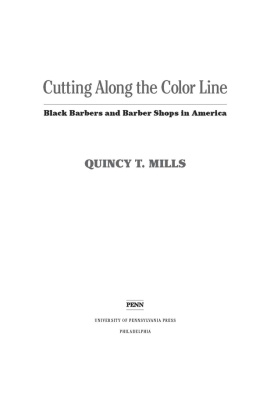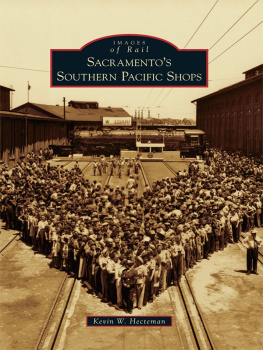Job Shop Leaders: Small Wins From a Factory Life
Torrence J. Smith
Copyright 2015 Torrence J. Smith
All rights reserved.
DEDICATION
This book is dedicated to my wife Barbara, mom Janice, dad Bobby, brother Troy, my three kids Cristian, Caitlin, and Maya, and my extended family.
Additional thanks to Nathan Harris, Dr. Sheila Ackerlind, my fellow veterans, and all the people Ive met along the journey
Table of Contents
I d like to acknowledge my wife, Barbara as the first reader of this text. She is also the owner of Telework Design which did the cover artwork for this book. You can contact her through her website www.teleworkdesign.com.
R ob Halford, lead singer for Judas Priest attributed their distinctive sound to his childhood in Birmingham, England. Iron foundry steam hammers pounded within walking distance of his school, lending the driving base beat that would fuel his career. Its fitting that manufacturing gave birth to heavy metal; factories have a rhythm of their own. All the people coming and going, taking customer orders, and running equipment, they thrash like a heart. They hope and breathe. I didnt always feel this way.
Curious and driven, I left the Army at twenty-seven hoping for the kind of work that would fill and challenge me, that ideal opportunity that would combine art and science. So time serving as an infantry officer was followed by a series of factories.
That first job shop gave me the thrill of new love, that maybe this was it. Ive worked for the government, factories, and sales offices and I can tell you that each of these could be considered a job shop. The type of work we did and the volume of work varied from day to day. It created the weightless fear sensation of riding a roller coaster.
Some of the most competent and intuitive job shop practitioners were small business owners. Their grasp of how such businesses worked was so instinctive that when asked, they drew a blank on how to explain. Their actions and decisions were macabre to me, the new guy. I was on the outside looking in.
If you work in high volume mass production this probably isn't written for you. If you've never lost a nights sleep trying to translate popular management theory into the zoo that is your workplace, put this down. This book is for the searchers.
This journal is not the be all, end all. Ive consumed the work of many authors and practitioners, whose output helped me synthesize the document youre holding. This book is a supplement to the rest of your library, something you can carry in your back pocket and re-read over lunch. Where possible I will point you to the original source so you can extend your understanding. Feel free to learn from my mistakes. I hope something Ive put down on the page will save you some heartache. You could even share a copy with your friends as a sign of affection.
We're going to talk about make to order factories, job shops, and mom and pop shops big and small. The good news for you is that the differences between big and small job shops are mostly a matter of scale. Regardless of volume, the principles are the same. Beginning with that first teacher that thought I might be special one day, I have learned from the best. I hope to give you what they gave me: the tools to improvise, to shape your reality and make things up as you go. Youre going to need them. Because if high volume production is heavy metal, make to order is jazz.
.
Job Shops vs High Volume Production
I m still not entirely sure what the attraction to job shops was. They were definitely more demanding than mass production. It took a certain amount of perception and cunning to identify the structure beneath the chaos.
Patterns taught in the military, high volume production in the automotive industry, and in management literature on lean manufacturing didnt seem to fit. Or the applicable were fractured by the high paced, rapidly changing nature of the high mix factories we were involved with.
With each little victory I have felt the psychic rewards associated with craftsmen that can now produce some portion of what is created in full at the level of mastery. Finally I felt a sense of stewardship toward my employees. I saw their frustration and understood I wasnt the only one who wanted to succeed. They wanted to succeed too.
Since there werent simple answers, we sometimes assumed there were none. Instead of having a production system we had an expedite system. To make it work required long tenured employees who knew all the quirks of the machines, processes, and customers. Managers were hands on, involved, customer centric workaholics. Orders were often late and customers padded for our poor on time delivery by increasing their order size and requesting delivery earlier than it was actually needed.
What was going on? I tried teasing out answers from the muck. After several years of this environment, exposure to the Theory of Constraints (TOC), and mentorship from some successful businesspeople, a pattern began to emerge.
Some of the things I had learned in the Army, some of the things I had learned in high volume automotive manufacturing, and some of the tools I had learned from lean and six sigma did apply. But none of them alone could be used to create a comprehensive system. What was left to me was to take the various tools and approaches and knit them into a hybrid.
You see, within the same factory there were lean applications, TOC applications, six sigma applications, and standard management applications. You have to figure out which to apply where. And due to the nature of the business, the applicability of the solutions were subject to. In six days, six months or six years our solution could become obsolete and require complete replacement. We had to identify and accept the importance of these dependencies, and be willing to pivot if and when they changed.
Next page











